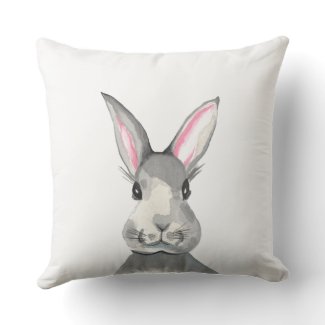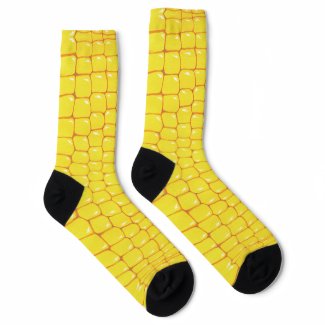Problem 5
Six boxes contain apples, bananas, and cucumbers. The number of apples in each box is equal to the total amount of bananas in other boxes. The number of bananas in each box is equal to the total amount of cucumbers in other boxes.
(a) Prove that the total number of fruits is a multiple of $31$.
(b) Place $31$ fruits in the boxes satisfying the conditions of the problem.
Solution
(a) Let $a_i$, $b_i$, and $c_i$ be the number of apples, bananas, and cucumbers in the box $i$, where $i=1,2,3,4,5,6$. Let
\[ A = \sum_{i=1}^{6} {a_i} \]
\[ B = \sum_{i=1}^{6} {b_i} \]
\[ C = \sum_{i=1}^{6} {c_i} \]
We will prove that $A+B+C$ is a multiple of $31$. From the conditions of the problem, we have
\[ a_i = B – b_i \]
and
\[ b_i = C – c_i \]
Adding the equalities $a_i = B – b_i$ over $i=1,2,3,4,5,6$ we have
\[ A = \sum_{i=1}^{6} {a_i} = 6B – \sum_{i=1}^{6} {b_i} = 6B -B = 5B \]
Adding the equalities $b_i = C – c_i$ over $i=1,2,3,4,5,6$ we have
\[ B = \sum_{i=1}^{6} {b_i} = 6C – \sum_{i=1}^{6} {c_i} = 6C -C = 5C \]
From here $A = 5B = 5(5C) = 25C$ and the total number of fruits is
\[ A+B+C = 25C+5C+C = 31C \]
which is a multiple of $31$, as desired.
(b) It is not hard to see that the following triples of apples, bananas and cucumbers satisfy the conditions of the problem:
Box $1$: $(1,0,5)$
Box $2$: $(0,1,4)$
Box $3$: $(0,1,4)$
Box $4$: $(0,1,4)$
Box $5$: $(0,1,4)$
Box $6$: $(0,1,4)$
Problem 6
Given $a,b \in \mathbb{N}$, such that $\gcd (a,b)=1$. Find all possible integer values of the expression
\[ M = \frac{a}{b} + \frac{2023b}{4a} \]
Solution
Answer: $M = \boxed{ 68, 148, 1012} $.
Let us rewrite $M$ as follows:
\[ M = \frac{4a^2+2023b^2}{4ab} \]
Since $M \in \mathbb{N}$, then $4a^2+2023b^2$ is divisible by $ab$. From here $b$ divides $4a^2+2023b^2$, which implies that $b$ divides $4a^2$. Since $\gcd (a,b)=1$, then $b$ divides $4$ and the possible values of $b$ are $1$, $2$ and $4$.
Similarly, $a$ divides $4a^2+2023b^2$, which implies that $a$ divides $2023b^2$. Since $\gcd (a,b)=1$, then $a$ divides $2023$ and the possible values of $a$ are $1$, $7$, $17$, $119$, $289$ and $2023$.
If $b=1$, then
\[ M = \frac{4a^2+2023}{4a} \]
and since $4a^2+2023$ is odd and $4a$ is even, then $M$ cannot be an integer.
If $b=2$, then
\[ M = \frac{a^2+2023}{2a} \]
It is not hard to check that
for $a=1$ we have $M=1012$
for $a=7$ we have $M=148$
for $a=17$ we have $M=68$
for $a=119$ we have $M=68$
for $a=289$ we have $M=148$
for $a=2023$ we have $M=1012$
If $b=4$, then
\[ M = \frac{a^2+8092}{4a} \]
and since $a$ is odd, then $4a^2+2023$ is odd, while $4a$ is even, and thus $M$ cannot be an integer.
Problem 7
$2023$ sages are located on a circle. Each of them either thinks that the Earth is the center of the universe or that it is not. Every second all the sages express their opinion at the same time. Every sage who is between two sages with a different opinion than his own will change his opinion at that moment. Determine the shortest time $t$ for all sages to have the same opinion regardless of their initial opinions.
Solution
Answer: $t$ does not exist.
Consider the following configuration, where exactly two sages have a different opinion from the rest and are neighbors. Then no sage will change their opinion at any time and the configuration where all sages will have the same opinion will never be reached.
Problem 8
$P$ is the point inside the quadrilateral $ABCD$, such that $AP \perp AD$ and $BP \perp CD$. Given that $AB=7$, $AP=3$, $BP=6$, $AD=5$, $CD=10$. Find the area of the triangle $ABC$.
Solution
Answer: $\boxed{ \frac{245}{6} }$.
Let $X$ be the intersection of $BP$ and $CD$, and let $\angle APB = \alpha$. Then $\angle APX = 180^{\circ} – \alpha$ and $\angle ADC = \alpha$.
Since $\angle ADC = \alpha = \angle APB$ and
\[ \frac{AP}{AD} = \frac{3}{5} = \frac{6}{10} = \frac{BP}{CD} \]
then the triangles $APB$ and $ADC$ are similar by $Side-Angle-Side$. From here
\[ \frac{AP}{AD} = \frac{AB}{AC} \]
and $AC=35/3$. Also $\angle CAD = \angle BAP$, which implies that
\[ \angle BAC = \angle BAP + \angle PAC = \angle BAP + 90^{\circ} – \angle CAD \]
and equals to
\[ \angle BAP + 90^{\circ} – \angle BAP = 90^{\circ} \]
From here the triangle $ABC$ is right and its area is
\[ \frac{AB \cdot AC}{2} = \frac{7 \cdot 35/3}{2} = \frac{245}{6} \]



